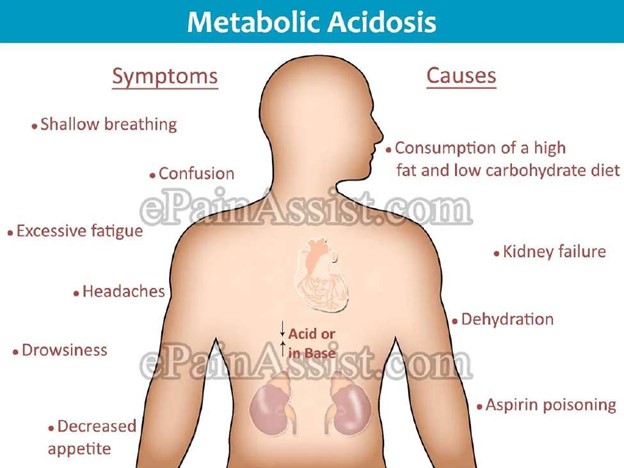Which of the following would be the best indicator of adequate hydration?
Increased urine output.
Decreased urine output.
Dry mucous membranes.
Hypertension.
The Correct Answer is A
Increased urine output is a sign of adequate hydration, as it means the kidneys are filtering waste and fluids from the body through the urine. The urine should be pale straw or lemonade colored, which indicates good hydration.
Choice B is wrong because decreased urine output is a sign of dehydration, as it means the kidneys are not working well and waste products are accumulating in the blood.
The urine may be dark and strong smelling, which indicates poor hydration.
Choice C is wrong because dry mucous membranes are a sign of dehydration, as they indicate a lack of fluid in the body tissues.
Choice D is wrong because hypertension is not a direct indicator of hydration status, although dehydration can cause low BP due to reduced blood volume.
Nursing Test Bank
Naxlex Comprehensive Predictor Exams
Related Questions
Correct Answer is A
Explanation

Metabolic acidosis is a condition in which there is excess acid in the body fluids.
It causes rapid breathing, confusion, tiredness, headache, and increased heart rate.
Rapid breathing is a compensatory mechanism that helps to lower the carbon dioxide levels and increase the pH of the blood.
Choice B is wrong because decreased respiratory rate would worsen the acidosis by retaining more carbon dioxide and lowering the pH of the blood.
Choice C is wrong because normal respiratory rate would not be adequate to compensate for the metabolic acidosis and would result in acidemia (low blood pH).
Choice D is wrong because irregular respiratory rate is not a typical response to metabolic acidosis and could indicate other problems such as brain injury or drug overdose.
Correct Answer is B
Explanation

This is because hyperkalemia is a condition where the blood potassium level is too high.
This can cause cardiac arrhythmias, muscle weakness, and paralysis. Therefore, the nurse should administer intravenous insulin and glucose to lower the blood potassium level by shifting it into the cells.
Choice A is wrong because encouraging the patient to consume a high- potassium diet would increase the blood potassium level and worsen the condition.
Choice C is wrong because administering a potassium-sparing diuretic would prevent the excretion of excess potassium and aggravate the hyperkalemia.
Choice D is wrong because encouraging the patient to limit fluid intake is not relevant to the management of hyperkalemia and may cause dehydration.
Whether you are a student looking to ace your exams or a practicing nurse seeking to enhance your expertise , our nursing education contents will empower you with the confidence and competence to make a difference in the lives of patients and become a respected leader in the healthcare field.
Visit Naxlex, invest in your future and unlock endless possibilities with our unparalleled nursing education contents today
Report Wrong Answer on the Current Question
Do you disagree with the answer? If yes, what is your expected answer? Explain.
Kindly be descriptive with the issue you are facing.
